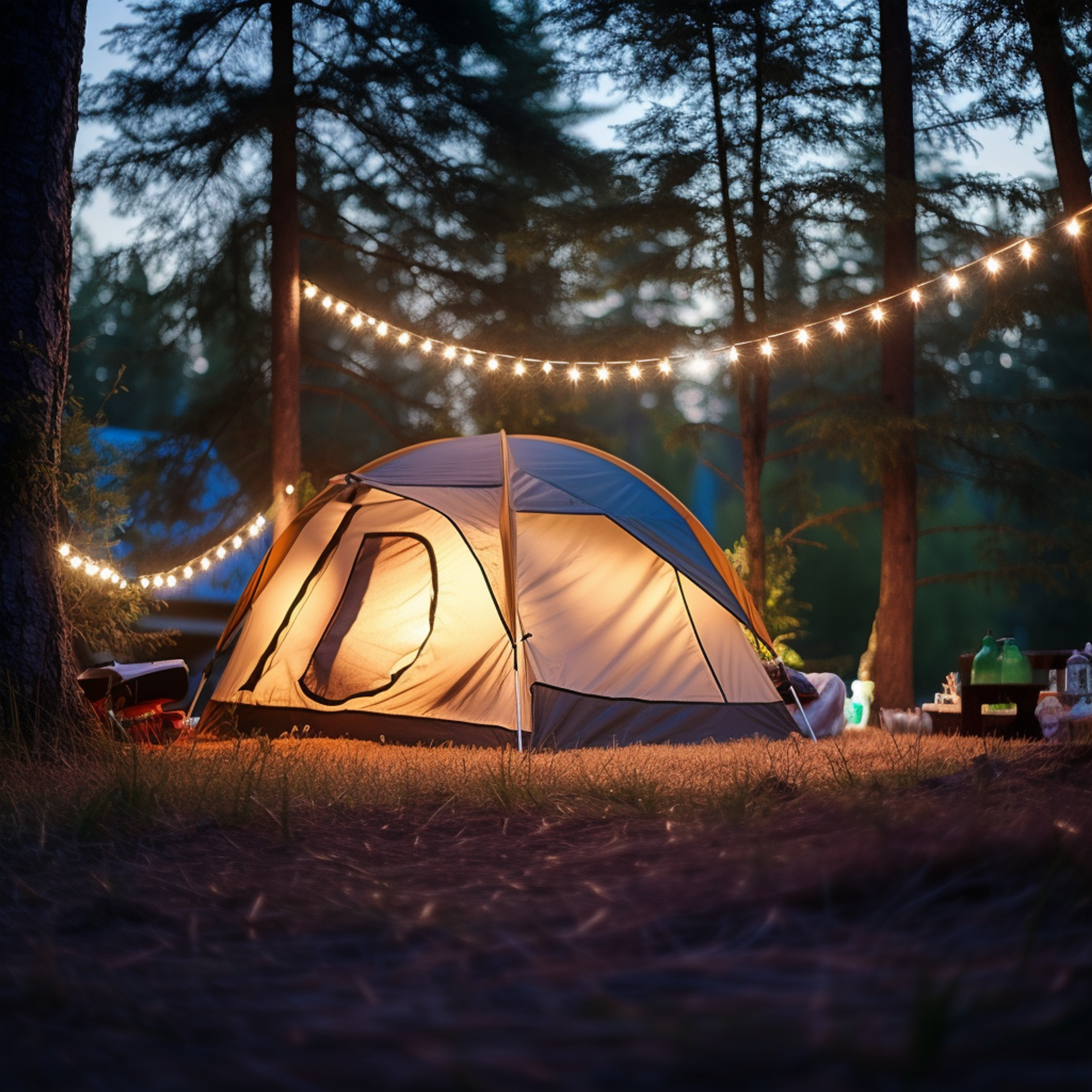How to Build a Campfire

We built this fire while camping near the Chattooga River in George, back when we used to live in Atlanta. It’s a beauty!
Camping under the stars, surrounded by the sounds of nature, is a wonderful experience. But to truly enhance this experience, building a campfire can provide warmth, light, and a central place to gather and share stories. Here, we'll guide you through the steps to build a safe and efficient campfire.
1. Choose the Right Spot:
Before starting your fire, find a spot that's at least 15 feet away from tents, trees, or any other flammable structures. Look for existing fire rings or pits in campgrounds, as these are designated spots for campfires. Some backcountry sites also have areas that have been cleared for campfires, usually with a circle of stones. Depending on the level of fire danger, some places will not allow any fires at all (except camp stoves for cooking) so make sure to check the rules where you’re going.
2. Gather Materials:
Note - some campgrounds require you to only use locally purchased wood to avoid the possibility of introducing invasive species.
You'll need three types of fuel:
- Tinder: Gather a substantial amount. Tinder ignites easily but burns out quickly. Dry grass, thin bark strips, pine needles, or even commercial fire starters can be used.
- Kindling: These are the bridge between your tinder and firewood. Small twigs or even large pine cones can work effectively.
- Firewood: Larger logs and branches. Ensure the wood is dry and free from fungi or rot.
3. Build Your Fire Base:
- Layering: Place a thick layer of tinder in the pit's center. This ensures a robust initial flame that can withstand initial winds or moisture.
- Protection: If it’s slightly windy, consider setting a windbreak using logs or a tarp (placed at a safe distance) to protect your initial flame. A fire reflector can both protect from the wind and increase the amount of heat felt, especially helpful on a cold night.
4. Add Kindling:
- Teepee Structure: Erect your kindling in a dense cone, ensuring plenty of small gaps for airflow. This structure is critical for a vibrant flame.
- Progressive Stacking: Start with your thinnest pieces at the bottom, working your way up to the thicker ones, allowing for a gradual build in the flame intensity.
6. Place Firewood:
Once the kindling is set, position your firewood in a similar teepee shape around the kindling. Remember, airflow is crucial. Don't pack the logs too tightly.
- Solid Foundation: Lay two or three larger logs as a base. This not only supports your teepee but ensures a lasting bed of embers.
- Interlacing: Place the logs in a crisscross pattern. This aids in even burning and promotes better ventilation.
7. Light the Fire:
Using a match or lighter, ignite the tinder. As the tinder catches fire, it will ignite the kindling, which in turn will ignite the firewood.
- Multiple Ignition Points: Light the tinder from several sides to ensure an even burn. This reduces the need for adjustments later.
- Safety First: Wear gloves to protect against sudden flare-ups and always keep your face, hair, and clothing (and children and pets!) away from the fire when lighting.
8. Maintain the Fire:
As the fire burns, it may require additional firewood. Place logs strategically to keep the fire burning and avoid smothering it. Always monitor your fire, ensuring it doesn’t become too large or unruly.
- Upkeep: Rotate logs as they burn so they burn evenly, and move them inward as they turn to embers.
- Safety Precautions: Keep a bucket of water or sand nearby for emergency dousing.
9. Extinguish the Fire Properly:
When it's time to put out your campfire, pour water onto it slowly. Stir the ashes with a stick, making sure all the embers are out. Continue pouring water and stirring until you can’t feel any heat when you place your hand near (but not directly over) the ashes.
- Gradual Cooling: Slowly pour water across all areas, paying attention to hissing sounds which indicate hot spots.
- Complete Dousing: Touch the ashes with the back of your hand to ensure no heat remains. If it's still warm, add more water.
10. Leave No Trace:
Once your fire is completely out, and the ashes are cold, return the site to its natural state. If you've used an established fire pit, this will be easy. If you made your own pit, fill it back in with dirt and scatter the cooled ashes.

Camping right by the beach at Half Moon Bay State Beach Campground, California. Our Outland Living fire pit is easy to set up and let’s us enjoy a campfire just about anywhere.
🔥 Building a campfire is a rewarding part of the camping experience. By following these steps and ensuring you build and extinguish your fire safely, you'll not only create a cozy atmosphere but also protect the beautiful nature around you. Remember, always follow local regulations and fire bans, and happy camping! Don’t want to build a fire? This Outland Living propane fire pit is one of our favorite pieces of camping equipment.
🏕️ Outdoorithm’s tools and resources are designed to make camping more accessible and enjoyable. Start planning with EarlyBird Advanced Campsite Booking Calculator to plan your next trip, chat with CampSageAI to answer your campground-specific questions, create a custom packing list with our GearMeUp tool, and check out our Campfire Conversations community forum.
Join our newsletter to get more resources and tips to help your family camp with confidence!

